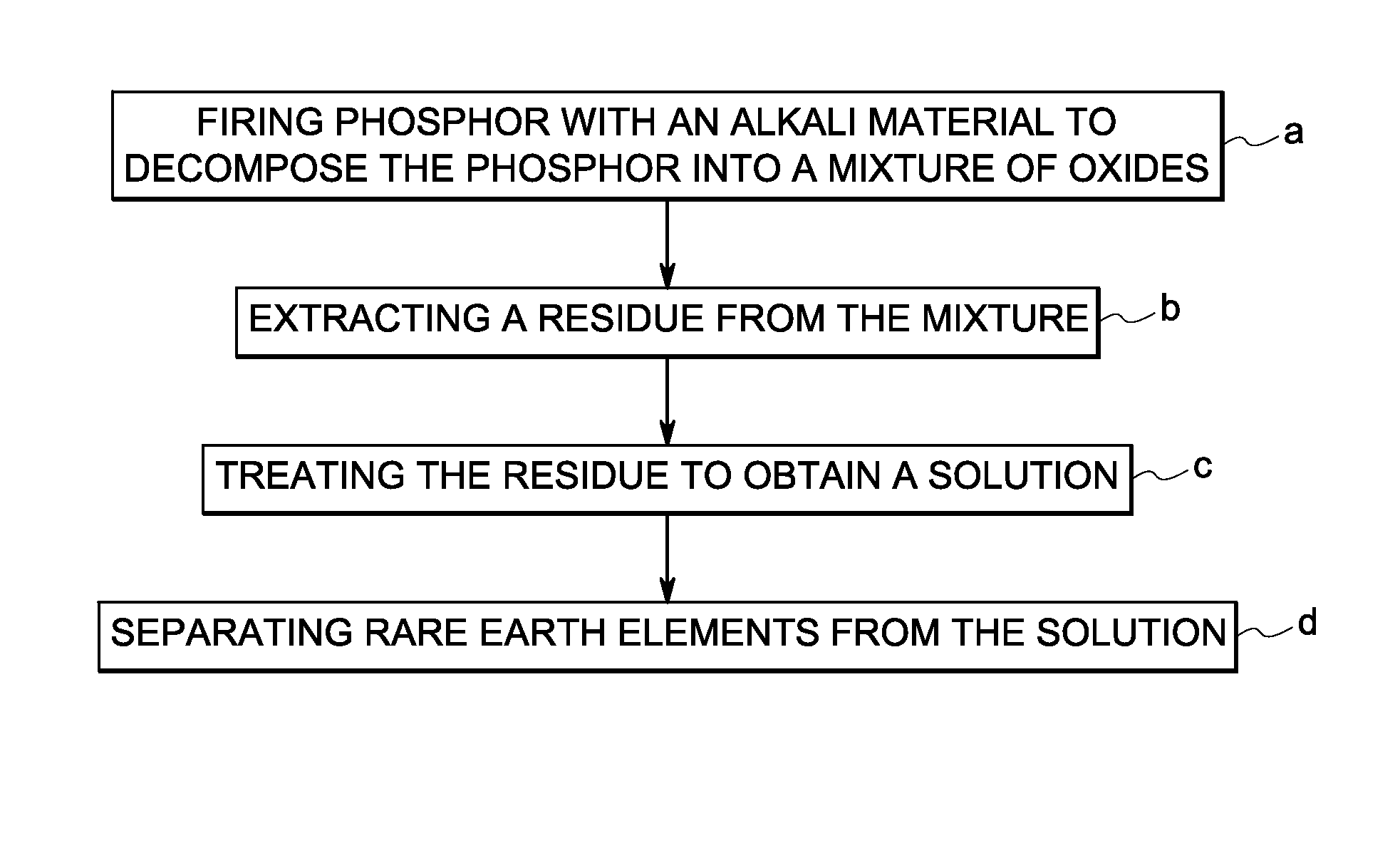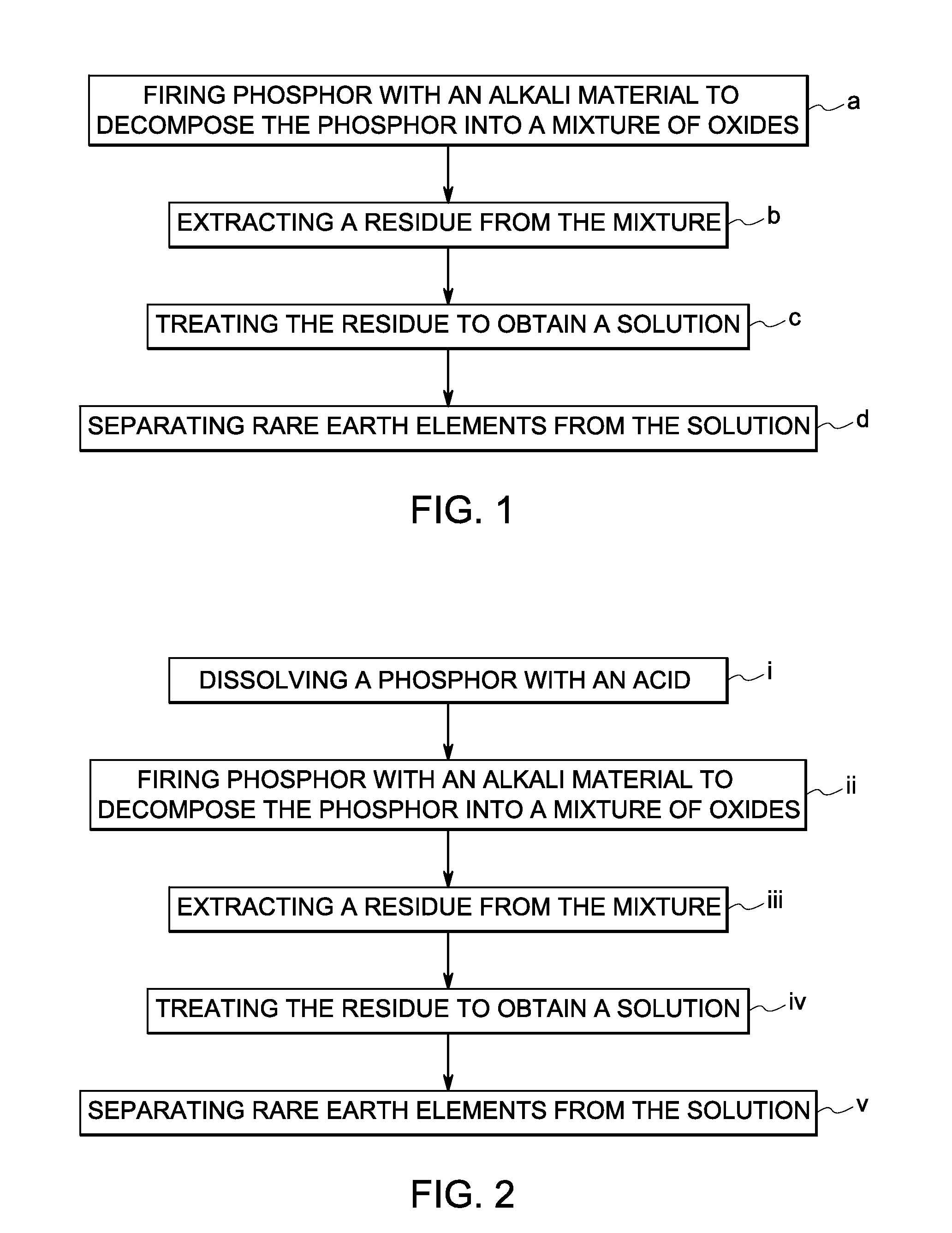Rare earth recovery from fluorescent material and associated method
a technology of fluorescent materials and rare earths, applied in rare earth metal nitrates, rare earth oxides/hydroxides, lanthanide oxides/hydroxides, etc., can solve problems such as not always economically suitable approaches
- Summary
- Abstract
- Description
- Claims
- Application Information
AI Technical Summary
Benefits of technology
Problems solved by technology
Method used
Image
Examples
example 1
Recovery of Terbium from Green Phosphor
[0028]A green phosphor, LaPO4:Ce,Tb (LAP), was used in this example. Since this phosphor does not have any related acid-soluble rare earth oxide, it was directly fired with sodium carbonate at 1000 degrees Celsius. As a result, LAP decomposed into mixed lanthanum, cerium, and terbium oxide. A byproduct, sodium phosphate, was also produced. The mixture was then washed with water. Being soluble in water, sodium phosphate was carried away with the water-wash. The remaining rare earth component, containing (La, Ce, Tb) oxide, was carried out through acid digestion, as generally described previously. The mixture was digested with nitric acid until the mixture was completely dissolved. A solution of lanthanum nitrate, cerium nitrate and terbium nitrate was obtained. The solution was boiled at neutral pH to separate out cerium oxyhydroxide and / or cerium oxide. Lanthanum nitrate and terbium nitrate remained in the solution. Terbium can be separated out...
example 2
Recovery of Europium from Blue Phosphor
[0029]A blue phosphor, BaMgAl10O17:Eu2+ (BAM), was used in this example. Since this phosphor does not have any related acid-soluble rare earth oxide, it was directly fired with sodium carbonate at 1000 degrees Celsius. As a result, BAM decomposed into barium oxide, barium carbonate, magnesium oxide, sodium aluminate and europium oxide. The mixture was then washed with water. Barium oxide and sodium aluminate were carried away with the water-wash as barium hydroxide and sodium aluminate. The remaining component, containing europium oxide along with barium carbonate and magnesium oxide, was then washed with dilute nitric acid. Barium carbonate and magnesium oxide reacted with the nitric acid, and the reaction products were carried away as nitrates. The europium oxide remained.
PUM
| Property | Measurement | Unit |
|---|---|---|
| temperature | aaaaa | aaaaa |
| temperature | aaaaa | aaaaa |
| acid-soluble | aaaaa | aaaaa |
Abstract
Description
Claims
Application Information
 Login to View More
Login to View More - R&D
- Intellectual Property
- Life Sciences
- Materials
- Tech Scout
- Unparalleled Data Quality
- Higher Quality Content
- 60% Fewer Hallucinations
Browse by: Latest US Patents, China's latest patents, Technical Efficacy Thesaurus, Application Domain, Technology Topic, Popular Technical Reports.
© 2025 PatSnap. All rights reserved.Legal|Privacy policy|Modern Slavery Act Transparency Statement|Sitemap|About US| Contact US: help@patsnap.com


